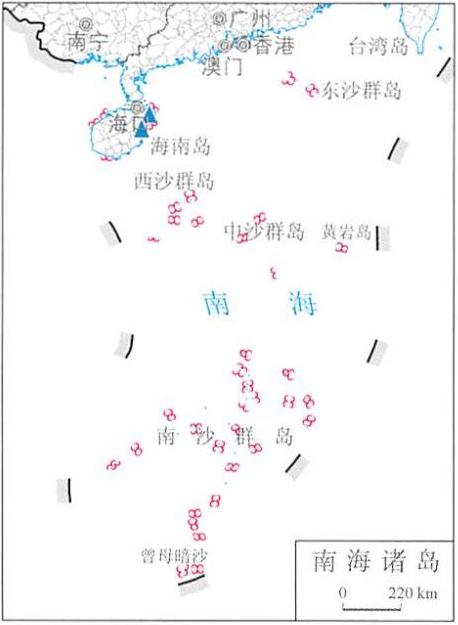Online map of China's October disaster distribution in 2014
Category: China Nature Disaster
Map description
Map source
The online map of China's October disaster distribution in 2014 is from the Atlas of natural disasters in China in 2014, the book is edited by the National Disaster Reduction Commission Office, the Disaster relief Department of the Ministry of Civil Affairs, the National Disaster Reduction Center of Ministry of Civil Affairs, and is published by China Map Publishing House. The scale of this map is 1:22000000.
Online map of China's October disaster distribution in 2014

Connect to the map above.
Disaster assessment in October:
1.Jinggu earthquake has great influence
In October, there were three earthquakes with magnitude ≥ 5 in mainland China, one in Sichuan, one in Yunnan and one in Qinghai. Among them, Jinggu earthquake with magnitude 6.6 on October 7 had the highest magnitude. Since then, three earthquakes with magnitude 4 or above occurred successively in Jinggu, Yunnan Province, the infrastructure such as transportation, communication, electric power, farmland and water conservancy were seriously damaged, which had a great impact on the production and life of local people.
2.Local low temperature freezing and snow disaster are prominent
In October, the northeast, northwest and Inner Mongolia had obvious rain, snow and cooling weather, with a local decrease of 14-18 °C, the low-temperature rain and snow weather caused serious damage to cotton, vegetables, melons and fruits. According to statistics, low temperature freezing and snow disasters have affected 1.329 million people in 68 counties (cities and districts) of 7 provinces (autonomous regions and municipalities directly under the central government), with an area of 124.7000 hectares of crops affected, including 22.5 thousand hectares of no harvest, and a direct economic loss of 1.57 billion yuan.
3.The flood disaster is light in general
In late October, heavy rainfall occurred in Hainan, Sichuan Basin, Guizhou and the middle and lower reaches of the Yangtze River, from 24 to 27, there were 43 villages and towns in Hainan with rainfall exceeding 300 mm, the maximum was 605.8 mm in Wancheng Town, Wanning City; From 27-30, the precipitation in Sichuan and Guizhou exceeded 50 mm, and in some areas it exceeded 100 mm. Heavy rainfall caused urban waterlogging in Hainan Qionghai and other places, and many expressways in Southwest China were closed. According to statistics, floods and geological disasters have caused disasters to 53 counties (cities and districts) in 12 provinces in China, and the overall losses are relatively light.
Various disasters:
The yellow circle in the figure indicates: Drought disaster.
The blue triangle in the figure indicates: Floods and geological disasters.
The brown diamond in the figure indicates: Wind and hail disasters.
The green circle in the figure indicates: Typhoon disaster.
The pink triangle in the figure indicates: Earthquake disaster.
The purple diamond in the figure indicates: Low temperature freezing and snow disaster.
Note: data on Taiwan, Hong Kong and Macao are not available.
Related maps
Online map of China's January disaster distribution in 2014
Online map of China's February disaster distribution in 2014
Online map of China's March disaster distribution in 2014
Online map of China's April disaster distribution in 2014
Online map of China's May disaster distribution in 2014
Online map of China's June disaster distribution in 2014
Online map of China's July disaster distribution in 2014
Online map of China's August disaster distribution in 2014
Online map of China's September disaster distribution in 2014
Online map of China's November disaster distribution in 2014
Online map of China's December disaster distribution in 2014
- Historical map of the Southern Song Dynasty and the Jin Dynasty in 1208 AD
- The Historical Maps of Qi State, Lu State and Song State During the Warring States Period in China
- Historical Maps of Chu State, Wu State and Yue State in Spring and Autumn Period of China
- A Historical Map of the Early Site of Chinese Primitive Society (Paleolithic Age)
- Online map of the maximum daily rainfall in July 16th,2010 during the mid and late July's flood disaster period in South China